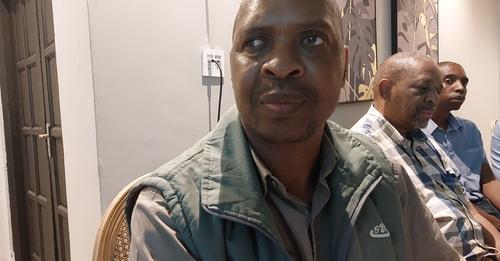As Zimbabwe looks to revitalize its mining sector and unlock its hidden mineral wealth, advanced exploration technologies and the strategic issuance of Exclusive Prospecting Orders (EPOs) are emerging as crucial catalysts for discovery, Mining Zimbabwe reports.
By Rudairo Mapuranga
The recent Geological Society of Zimbabwe Summer Symposium and MacGregor Memorial Lecture, held in Bulawayo, focused on these topics, highlighting their significance for Zimbabwe’s mining future.
Speaking at the event, Geological Society of Zimbabwe Chairman Enerst Mugandani emphasized the importance of thorough exploration in achieving Zimbabwe’s Vision 2030 goals, aiming for an upper-middle-income economy.
According to Mugandani, this was the first time the Summer Symposium was held in Bulawayo—a decision driven by the need to focus on the largely unexplored southern regions of Zimbabwe, including areas covered by Kalahari Sands.
“Thank you very much for coming to Bulawayo for this important event. For the first time, we are hosting the Summer Symposium here, where one of the most critical topics is exploration. It’s essential for Zimbabwe to be fully explored using the latest technologies to achieve Vision 2030, aiming for an upper-middle-income economy that benefits everyone,” Mugandani said.
Mugandani stressed that exploration is the first critical stage in the mining cycle, highlighting the importance of advanced technologies like high-resolution geophysics and geochemical surveys in discovering hidden mineral deposits.
“Exploration is essential because it’s the first stage in the mining cycle. We need to locate minerals, determine their locations, and assess their quantities.”
“Many of our deposits are now hidden beneath layers like the Kalahari Sands, and it’s crucial that we utilize advanced technologies to unlock the country’s mineral wealth,” he added.
These technologies are not only essential due to geological conditions but also because many of Zimbabwe’s large mines are nearing the end of their life cycles. Mugandani pointed out that new mineral deposits must be discovered to ensure the sustainability of the mining sector, which plays a pivotal role in Zimbabwe’s economy.
The symposium also featured experts in geophysics, geochemistry, and remote sensing, discussing advancements in mineral exploration, particularly in regions historically difficult to explore due to geological coverings like the Kalahari Sands. The growing importance of drones, artificial intelligence, and satellite technology for precise exploration data was underscored, emphasizing how the future of mining in Zimbabwe will increasingly depend on these tools.
A key theme at the symposium was the role of EPOs in facilitating exploration. These licenses, granted by the government, provide mining companies the exclusive right to explore specific areas for a designated period, encouraging the use of advanced technologies and increasing the chances of valuable mineral discoveries.
“EPOs enable exploration on a larger scale, which leads to mineral discoveries. Many of our current deposits were discovered through past exploration efforts, but as our large mines approach the end of their life cycles, we need to explore new deposits to sustain the sector,” Mugandani stated.
EPOs are vital in shaping Zimbabwe’s mining future, providing a framework that encourages private investment in exploration. Without these orders, large-scale discoveries become harder to achieve. Mugandani and other participants highlighted the need for government support, streamlined licensing procedures, and fiscal incentives to foster a conducive exploration environment and attract both domestic and international investors.
Bulawayo’s choice for the symposium was significant. Mugandani noted that much of Zimbabwe’s southern region, including Bulawayo, is covered by Kalahari Sands, making exploration challenging. However, technological advancements offer solutions for discovering minerals even in such areas.
“We chose Bulawayo for the 2024 Summer Symposium because, although most previous events have been in Harare, we have geoscientists based in the southern region. This region is largely covered by Kalahari Sands, so it’s important for us to discuss exploration methods for such areas,” he said.
A success story presented at the symposium was the Dorkwe project in Tsholotsho, where, despite the Kalahari Sands, advanced geophysical and geochemical technologies enabled the discovery of gold. Mugandani cited this as an example of how innovation and targeted exploration can uncover new mineral wealth in Zimbabwe.
The symposium also allowed geoscientists, policymakers, and investors to network and exchange ideas on best practices for mineral exploration. A field trip to Matopos, one of the most geologically significant areas in southern Zimbabwe, showcased the region’s unique rock formations and furthered discussions on the future of mineral exploration.
As Zimbabwe looks toward its Vision 2030 goals, continued government support through exploration licenses and regulatory reforms remains essential.
“The country will greatly benefit if the government issues more exploration licenses. This sector provides employment for many geologists who are exploring Zimbabwe’s mineral wealth,” Mugandani explained.
The Geological Society of Zimbabwe has been actively lobbying the government to increase the issuance of EPOs, which will not only ensure the discovery of new mineral deposits but also create job opportunities for geologists and other professionals in the sector.
The Summer Symposium in Bulawayo underscored the critical role of exploration in Zimbabwe’s mining future. By embracing advanced technologies and facilitating exploration through EPOs, Zimbabwe can unlock its hidden mineral wealth, drive economic growth, and ensure a prosperous future for all its citizens.
.png)




